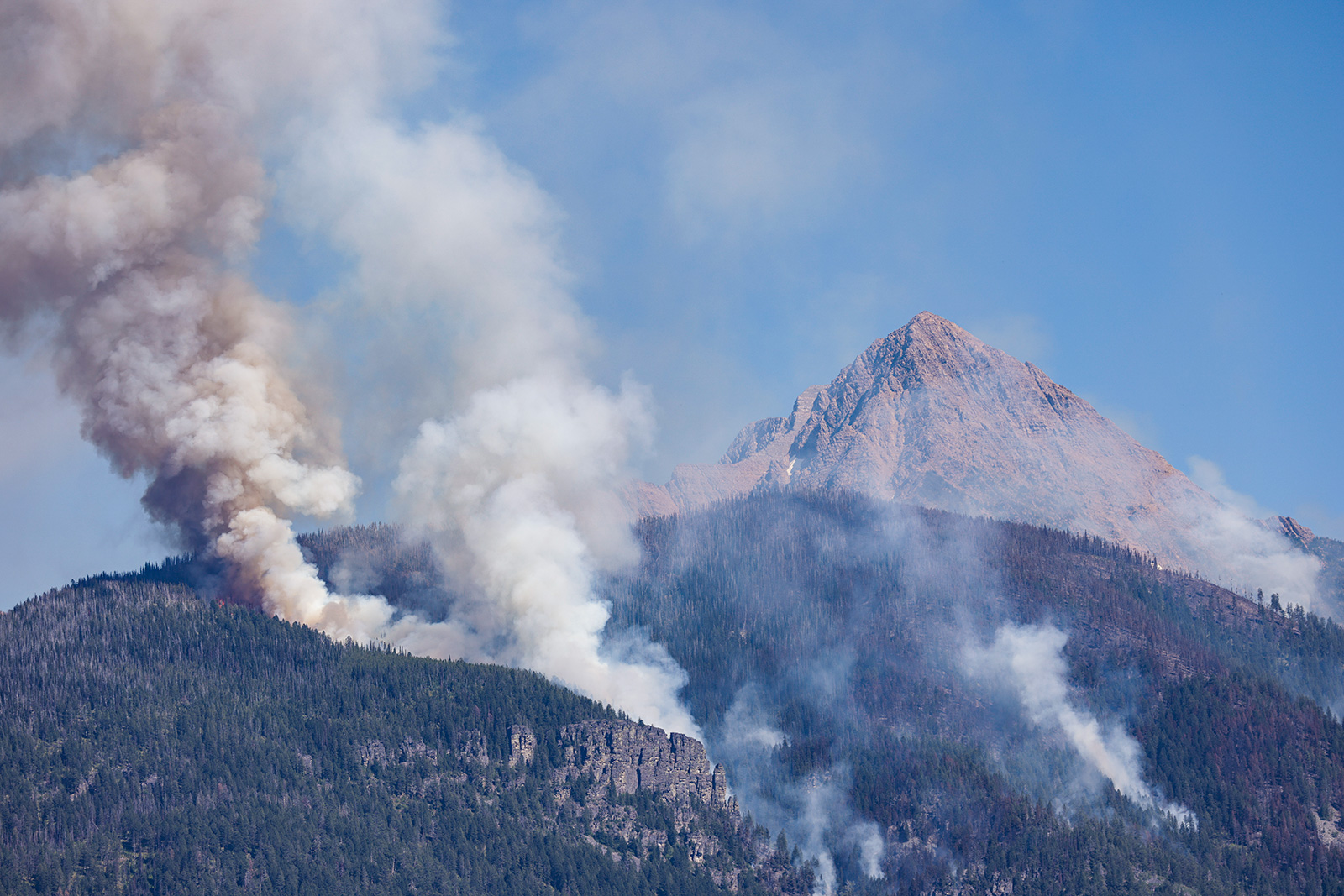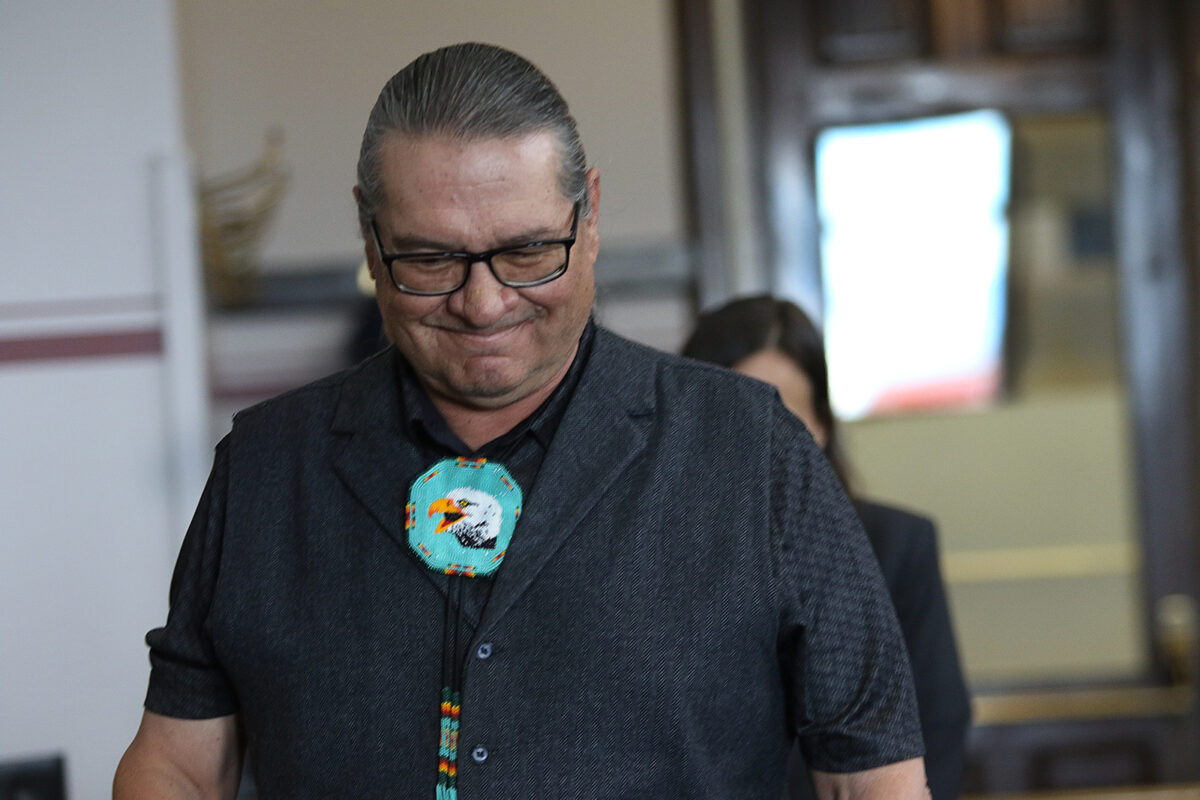CSKT Climate Change StoryMap Wins Award for Excellence in Traditional Ecological Knowledge
The interactive multimedia presentation is transforming a static climate change plan into a ’living document’
By Micah Drew
Mike Durglo Jr. has spent more than 40 years preserving cultural and natural resources on the Flathead Indian Reservation, with a focus on finding ways to bridge his professional work with the local community. Durglo spent years leading development of the Tribes’ Climate Change Strategic Plan (CCSP), bringing dozens of community members into the process as members of a planning committee that has been lauded as an example of Native-led climate action. To engage local youth in sustainability projects, he created the Environmental Advocates for Global Logical Ecological Sustainability (EAGLES) Program, helping students set up recycling programs and community gardens. These efforts, and more, led to recognition by the Obama administration in 2016 as a “White House Champion of Change for Climate Equity,” and he recently stepped into the position as Climate Change Coordinator for the Confederated Salish and Kootenai Tribes (CSKT).
Despite his successes, Durglo still finds it hard to convey the complexities of the Tribes’ ongoing work to counter climate change impacts.
“It seems like the local people don’t know as much about what’s going on as people far away,” Durglo said. “We were one of the first tribes in the nation to develop a climate plan, but that’s a PDF document that’s pretty dense for most people. In reality, it’s a living document and we need to be able to communicate that.”
Over the last few years, Durglo and Kyle Bocinsky, the director of climate extension at the Montana Climate Office, have led a project to develop an innovative ArcGIS StoryMap that gives an interactive and interconnected view of climate change, its impact on the CSKT, and how the tribes are bringing forward solutions.
The StoryMap is part of the National Integrated Drought Information System-funded Native Drought Resilience Project, a collaborative effort between the CSKT, Salish Kootenai College, the Montana Climate Office and The Wilderness Society, and the initial multimedia website recently earned recognition in the Esri ArcGIS StoryMaps competition, winning a new Native Nations Traditional Ecological Knowledge (TEK) award.
“We are honored to receive the Esri Native Nations TEK Award,” Bocinsky said. “This recognition is a testament to CSKT’s commitment to leveraging technology to convey the profound impacts of climate change on the reservation and to engage the community in solutions.”

The effects of climate change are clearly visible across the landscape that comprises the Flathead Indian Reservation.
From rapidly receding snowpack in the Mission Mountains, or historic low water levels of Flathead Lake due to extreme drought, Durglo can draw a direct connection to the changing climate. But a comprehensive explanation of its effects, as well as examples of solutions-oriented projects, are trickier concepts to convey.
When the CSKT first developed its climate plan in 2012, the idea was to take it out to the community and engage residents in various strategies to combat climate change, Durglo said. At first, he was able to accomplish that through local gatherings and meetings, but the ever-evolving nature of the climate plan — due to additional research, continuously updated models and new on-the-ground initiatives — made it difficult to keep citizens up to date and engaged.
When COVID hit in 2020 and it wasn’t possible to gather in person, he realized he needed a new strategy.
“It’s an idea I’d actually wanted to do for a while, but it really came to fruition after COVID,” Durglo said. “We got some grants and started the conversations with the Climate Office and it all just came together in a good way.”
Bocinsky was brought in to do climate projection analysis for the Reservation, but instead of merely extracting data to be used in charts and graphs, he found himself finding ways to translate it into real world variables. Through conversations with Durglo and others on the CSKT Climate Change Advisory Committee — “If you want to be on the Climate Change Advisory Committee, you’re a lifetime member,” Durglo says — the opportunity to develop a multimedia project to present the story of climate change and climate adaptation came together.
“StoryMaps are a great tool for doing that especially these days where we’re inundated with maps and geospatial data in everyday life,” Bocinsky said. “We can tell stories spatially, which is how we really orient ourselves in the world and how we see change. We see fire scars across the land, we see where smoke settles in the valleys, we see animal pathways change over time. Most of human experience has a spatial component and projects like this acknowledge that.”
Durglo authored the main storylines covered in the CCSP and Annika Mayer with the Montana Climate Office developed the first round of interactive story collections.
The StoryMap breaks down the CCSP into various sectors, including forestry, water, wildlife and fisheries, with each chapter highlighting the impacts of drought and climate change on the sector and proposing solutions. The combination of written words, videos, audio tracks, maps and images transforms what was initially a static 75-page document into a dynamic, accessible resource.
“It’s something that can capture people’s imagination and tell stories in a way lots of people haven’t seen,” Bocinsky said.

One section of the StoryMap focuses on the CSKT’s whitebark pine tree restoration efforts. The whitebark pine is considered a keystone species in the alpine landscape and holds in important place in tribal heritage.
StoryMap viewers are transported to Three Lakes Peaks where an ancient sc ̌̓iɫpálq͏ ʷ (whitebark pine) named Ilawye”, or “great great grandparent,” watches forlornly over a landscape that, once teeming with groves of live trees, is considered a “ghost forest.”
From there, viewers are shown how CSKT climbers cage pinecones on living whitebark pines to collect seeds and transport them to a greenhouse in Ronan where tribal foresters oversee thousands of seedlings. After four years of growth, the seedlings are planted — in 2023 the CSKT placed more than 4,000 seedlings in the ground. It’s a kind of storyline that prompts questions and conversations and hopefully urges viewers to get involved.
“Each of these stories is meant to show people what’s going on, but also let them know what they can do to make a difference,” Durglo said. “People think there’s nothing they can do to change the direction we’re going in, but there is. For me, it’s about instilling hope into folks, and telling them there’s a whole lot of stuff we can do each and every day.”
As an interactive website, the StoryMap is being continuously updated, with several more chapters planned for release soon.
View the full StoryMap here, and learn more about the TEK Award here.